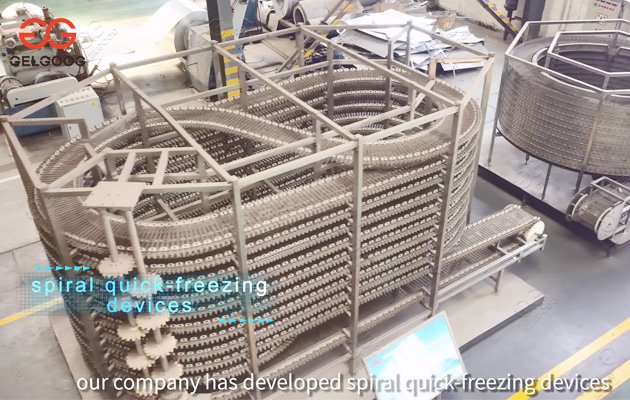What Is IQF And Its Advantages and Disadvantages
 Oct 28 2020
By admin
Oct 28 2020
By admin
IQF foods are becoming more and more popular now and are welcomed and sought after by people. There are many people who want to start the quick-frozen food business, but they don't know what is IQF. Today, I will share with you the advantages and disadvantages of quick-freezing.

Advantages of IQF:
Maintenance of food quality:
Compared with products frozen by slow freezing technology, IQF freezing technology can effectively inhibit the destruction of food cells during the freezing process with individual quick freezing machine. Thereby preventing the loss of freshness and nutrients of food.
At the same time, the blood volume of the food after thawing will be reduced, and the quality of the food after thawing and before freezing will not be very different.
Reduction of food loss:
IQF freezing is the individual freezing of food.
For example, when processing seafood, it is not to freeze various foods such as sliced fish or sea shrimps together. Instead, foods such as sliced fish are individually packaged and frozen.
By classifying and packaging food individually, when you need food, you only need to take out the required amount and thaw it. It is not necessary to defrost a whole fish. The loss rate of food will therefore be reduced. It is very attractive for restaurant operators.
Reduce labor costs and manufacturing costs:
If IQF freezing technology is used, the freezing time will be greatly shortened. As a result, necessary expenses such as labor costs and manufacturing costs will also be reduced.
After the introduction of the IQF refrigeration system, the quality of food can be maintained and managed for a long time, so stable food processing and production can be realized.
Even in busy periods, it is no longer necessary to run to ensure raw materials.
Logistics cost reduction
As a method of freezing food, some foods adopt water injection freezing technology.
In order to ensure the freshness of the product after freezing, the water injection freezing technology will perform water injection treatment on the product, so usually one third of the product is water. The cost of water injection and the extra cost of transportation will affect the delivery cost of the product itself.
IQF is different from the water injection freezing technology in that there is no need to inject water during freezing, so unnecessary costs can be saved.
Disadvantages of IQF
Product surface is easy to frost
The most annoying thing when using a quick-freezer is the frosting problem. There should be many businesses who want to freeze their own meat, fresh fish, and vegetables, and then review whether to buy a quick-freezer.
However, if a general quick-freezer is used to freeze foods containing moisture such as meat, fish, vegetables, etc., the moisture of the food will volatilize during freezing and cause the food to dry.
If the food containing moisture before freezing becomes dry during freezing, the water vapor in the air will adhere to the frozen food, resulting in frosting on the surface of the food.
Low quick freezing temperature and short quick freezing time will reduce the degree of frosting. Contact us to provide you with suitable individual quick freezing equipment.
The moisture inside the food is volatilized
When freezing with IQF, food needs to be subdivided and frozen, so the surface area subject to freezing will increase accordingly. It may volatilize the moisture inside the food and acidify the fat.
At this time, the freshness of the food affects the flavor and taste of the food, so special attention should be paid when freezing.
The two shortcomings that IQF needs to pay attention to when freezing are solved by vacuum packaging the food.
Only by vacuum packaging the food can prevent the frosting of water vapor in the air and inhibit the acidification of the food.
When actually importing IQF freezing technology, it is recommended that you comprehensively consider whether you need vacuum packaging in accordance with the types of frozen food, quality requirements, and storage period.

